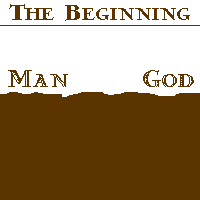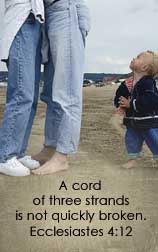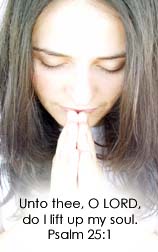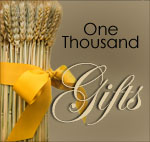I thought, this being Holy Week, that it would be appropriate to give some insight about Passover from my very dear and recently departed friend, who was a father figure and spiritual mentor to me. He wrote this in 2009, when Passover and the dates were exactly the same as this year (Passover began last night at sundown). I hope you find your understanding of Passover and the sacrificial lamb to be a bit greater after having read this post. Thank you, Jack, for your wisdom and for writing as God lead you over the past 11 years and for your friendship and guildance over the past 10 1/2. You are missed daily more than you know...
Washed In the Blood
Today begins the Passover season which runs for seven days, ending this year on April 2nd.
Technically, Passover actually began yesterday. The Jewish calendar begins at sundown, rather than sunrise, meaning that Thursday begins Wednesday night. So Passover starts twenty-four times around the world as each time zone views its sunset.
The Passover story is well known to Christians, primarily as a Jewish holiday. But the Jewish Passover is an integral part of the Christian story. Without Passover, there could be no salvation for the Gentiles.
At Passover, Jews are asked to see the story as if each of them had been there that night in Egypt. Traditional foods are prepared in advance according to the Haggadah or story of the Exodus.
With the Haggadah as a guide, Passover has been and is celebrated in pretty much the same manner down through the ages and in every land and every nation.
Seder customs include drinking of four cups of wine, eating matza (unleavened bread) and partaking of symbolic foods placed on the Passover Seder Plate.
The four cups of wine are obligatory; representing four expressions of God's will: "I will bring out"; "I will deliver"; "I will take"; and, "I will Redeem".
It is also symbolic of the four world ages: this present world, the Messianic Age, the world at the resurrection, and the world to come. (See 2nd Peter 3:10-12)
The four expressions of God's will find an equal place within Christianity. "I will bring out" (Romans 8:29) "I will deliver" (Galatians 1:4) "I will take" (Romans 11:27) and, "I will Redeem" (Galatians 3:13)
Christians also know of four 'worlds' this one which we are 'in' but not 'of' the Messianic (Kingdom) Age, the general resurrection of the dead at the Great White Throne and the new heavens and the new earth.
At the Passover Seder, the youngest present asks the question: "Why is this night different from all other nights?" This is so important that if no children are present, the responsibility falls to the wife or other participants. If a man is alone at Seder, he is obligated to ask the question of himself.
The Passover involves the retelling of the ten plagues God sent upon Pharoh, including the last and most terrible, the sending of the Angel of Death.
God told the Jews to smear the blood of a lamb above the doorposts of their homes, which would cause the Angel of Death to 'pass over' those homes which were under Divine protection.
For centuries, the Jewish Passover concluded with the words, "Next year, in Jerusalem!" symbolizing the Jewish love for the City of God and their longing for the restoration of Temple sacrifice.
Washed In the Blood of the Lamb?
There is a traditional Christian hymn whose chorus goes like this:
"Are you washed in the blood, / In the soul cleansing blood of the Lamb? / Are your garments spotless? / Are they white as snow? / Are you washed in the blood of the Lamb?"
We've not discussed what that really means in some time now, and there is no better time to discuss it than at Passover. Everything about our understanding of our salvation has its roots in the Jewish sacrificial lamb.
During the days of Temple worship, a family would offer a Passover lamb for sacrifice at the Temple as covering for the sins of that family. That ritual teaches us much about the love of our Heavenly Father and what the sacrifice of the Lamb of God really means.
Some weeks before Passover, the head of the household would cull out the most perfect lamb in his flock. To be acceptable, the lamb could not be purchased. It had to be raised by the family.
The lamb would be brought into the household as a pet. The kids would play with it, wash and groom it, grow attached to it, and even name it, making it a part of the family. It was a necessary element of the sacrifice that the family had to grow to love that particular lamb.
At the Temple, the head of the household would certify the lamb met all the conditions before accepting it as a sacrifice. The lamb would have a placard put around its neck identifying the sinner for whom it was about to die.
Here's where this gets hard. The head of the household, (to whom the lamb was a beloved pet) didn't get to just leave the lamb there and go home, like a person dropping off a sick pet at the vets to be euthanized. (Or even one who comforts the pet while the vet does it.)
It's YOUR sin. It's YOUR sacrifice. So YOU do it.
The priest would carefully instruct you in the most humane way to conduct the sacrifice, but you had to do it. You would be taught how to gently squeeze off the lamb's jugular with thumb and forefinger until the lamb would pass out.
Open your mind! See this picture!
The lamb falls asleep against the sinner's breast like the beloved pet that it has become. Once the lamb was unconscious, the penitent, still holding the lamb's throat, would be instructed on how to insert the knife, nick the jugular and hold the lamb over the laver to catch its blood for the sacrifice.
As the blood flowed, it would flow OVER the penitent's hands and arms, staining him with the sacrificial blood.
The lamb's innocent little heart would continue to pump out the blood, which would continue to stain the head of the household until it had pumped its last and the little lamb was dead.
The priest would hold up the now-dead lamb before the Lord, read the name of the family as it appeared on the placard around its neck, and declare the lamb's 'sins' before the Lord.
“This lamb was sacrificed for the sins of the Kinsella family,” the priest might intone.
The family's beloved pet lamb was dead, its blood was sprinkled over the mercy seat of the Ark, and the sins of the family were covered for another year.
The lamb bore the placard naming the family of sinners. The sinners bore the stains of the blood of the lamb.
The Lamb of God
"I am crucified with Christ: neverthless I live; yet not I, but Christ liveth in me: and the life which I now live in the flesh I live by the faith of the Son of God, who loved me, and gave himself for me. I do not frustrate the grace of God: for if righteousness come by the law, then Christ is dead in vain." (Galatians 2:20-21)
In Judea in AD 33, Latin was the language of business, as English is today. But most people grew up speaking Greek, which was the lingua franca, or the common language of the empire, a holdover from the days of Alexander the Great.
The Septuagint, the Greek version of the Torah, was so translated because more Jews spoke Greek than Hebrew.
So there was Latin and Greek, and finally, the language of the Jews at the time, which was Aramaic.
It wasn't the Jews who drove the nails. It was the Romans. While the people cheered in Aramaic and Greek.
All present had to participate. Had they not, then there could have been no Crucifixion, no Resurrection, no redemption. It was for the SINS of all mankind -- all mankind was represented there.
"Then said Jesus, Father, forgive them; for they know not what they do." (Luke 23:34)
Assessment:
Above the Cross, Pilate order the following inscription in ALL THREE languages:
"This is Jesus. King of the Jews."
Jesus bore the name of the 'family' for which His blood was shed -- it was the Family of Man.
"For I am not ashamed of the gospel of Christ: for it is the power of God unto salvation to every one that believeth; to the Jew first, and also to the Greek." (Romans 1:16)
God identified His Lamb Whom He loved, and inscribed the sin for which He died, as a substitutionary sacrifice for all mankind.
Remember, it couldn't be just any Lamb, but it had to be God's Lamb.
"Thou art My beloved Son, in Whom I am well-pleased." (Mark 1:11)
This was no humane kosher sacrifice, but a bloody, vicious, violent, painful, tortured and shameful execution at the hands of the very family the Lamb loved so deeply and Who asks only our trust in return.
When Caiphas objected, asking the inscription be changed to say, “This is Jesus, who CLAIMED to be King of the Jews,” Pilate rebuffed him, saying, “What I have written, I have written."
For that was the charge against Him for which He was crucified. For the sins of the Jews as their King. For the sins of the Romans as their occupier. And for the sins of mankind as they stood by as spectators. And for you. And for me.
Jesus is their King, and ours. And God's Lamb.
Are your garments spotless? Are they white as snow?
Are YOU washed in the Blood of the Lamb?
Why is this day different than all other days?
Because it is the day that we learn just how much God loves us. How much He loves YOU.
At the Passover, God set in motion the sequence of events that would culminate twelve centuries later with the sacrifice of the Pascal Lamb for all mankind.
And for you. As if you were the only sinner who ever lived, the Lord Jesus Christ was sacrificed for YOUR sins.
That is the God Whom we serve. And that is the weight of our sin before Him.
"But God commendeth his love toward us, in that, while we were yet sinners, Christ died for us." (Romans 5:8)
Amazing love! How can it be? That Thou, my God, shouldst die for me!
Maranatha!









































































No comments:
Post a Comment